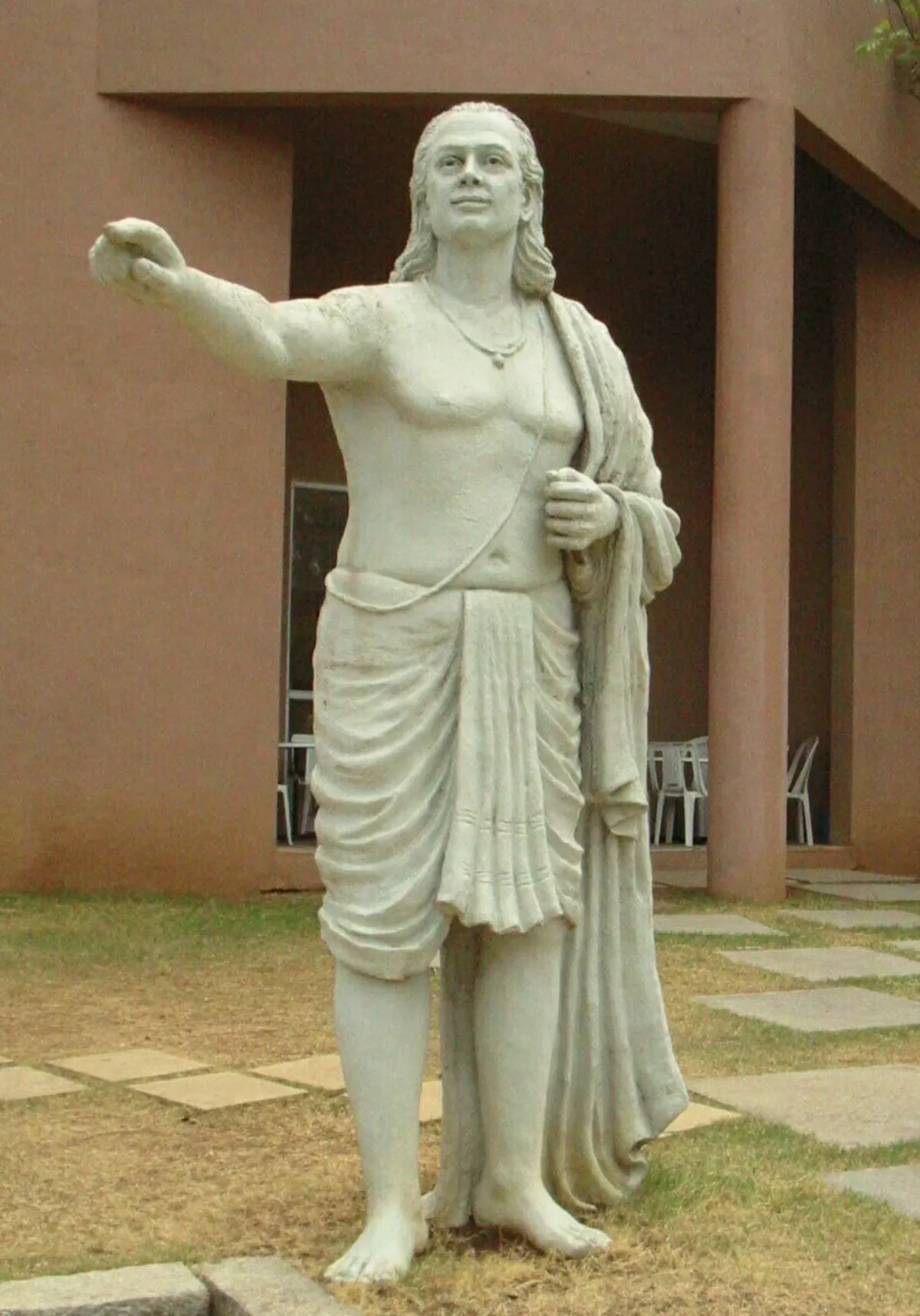 1.
1. Aryabhata's works include the Aryabhatiya and the Arya-siddhanta.

 1.
1. Aryabhata's works include the Aryabhatiya and the Arya-siddhanta.
Aryabhata called himself a native of Kusumapura or Pataliputra.
Aryabhata mentions "Lanka" on several occasions in the Aryabhatiya, but his "Lanka" is an abstraction, standing for a point on the equator at the same longitude as his Ujjayini.
Aryabhata is reputed to have set up an observatory at the Sun temple in Taregana, Bihar.
Aryabhata is the author of several treatises on mathematics and astronomy, though Aryabhatiya is the only one which survives.
Direct details of Aryabhata's work are known only from the Aryabhatiya.
In Ganitapada 6, Aryabhata gives the area of a triangle as.
Aryabhata discussed the concept of sine in his work by the name of ardha-jya, which literally means "half-chord".
Aryabhata correctly insisted that the Earth rotates about its axis daily, and that the apparent movement of the stars is a relative motion caused by the rotation of the Earth, contrary to the then-prevailing view, that the sky rotated.
Aryabhata described a geocentric model of the Solar System, in which the Sun and Moon are each carried by epicycles.
Later Indian astronomers improved on the calculations, but Aryabhata's methods provided the core.
Aryabhata's model gave corrections for the speeds of the planets in the sky in terms of the mean speed of the Sun.
The general consensus is that a synodic anomaly does not imply a physically heliocentric orbit, and that Aryabhata's system was not explicitly heliocentric.
Aryabhata's work was of great influence in the Indian astronomical tradition and influenced several neighbouring cultures through translations.
Some of his results are cited by Al-Khwarizmi and in the 10th century Al-Biruni stated that Aryabhata's followers believed that the Earth rotated on its axis.